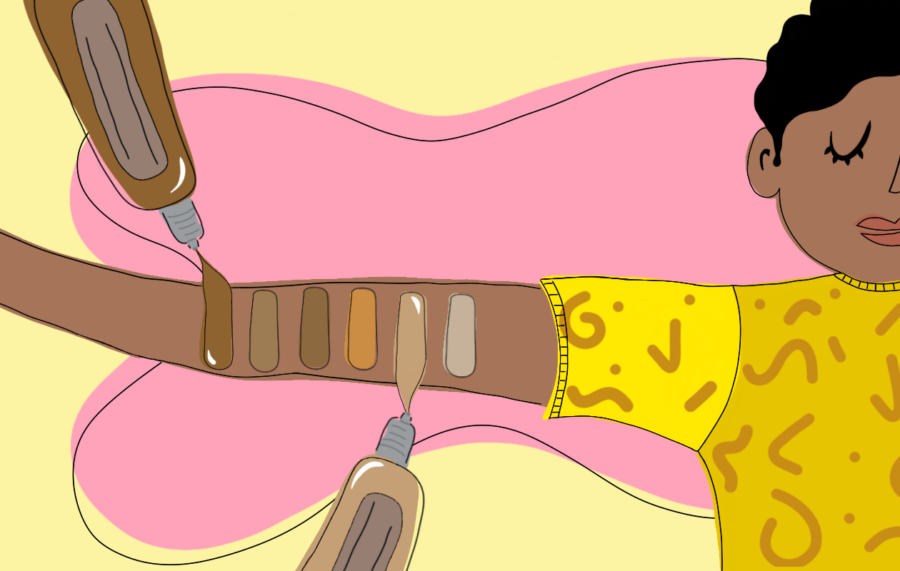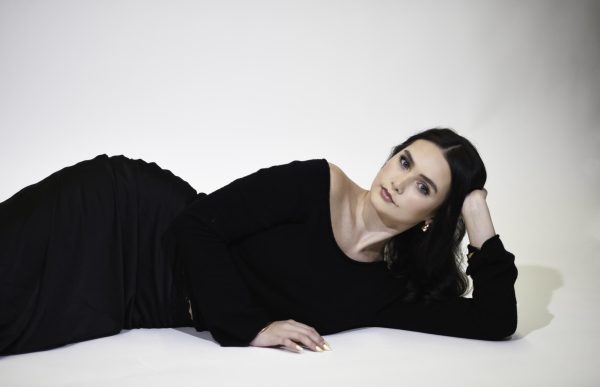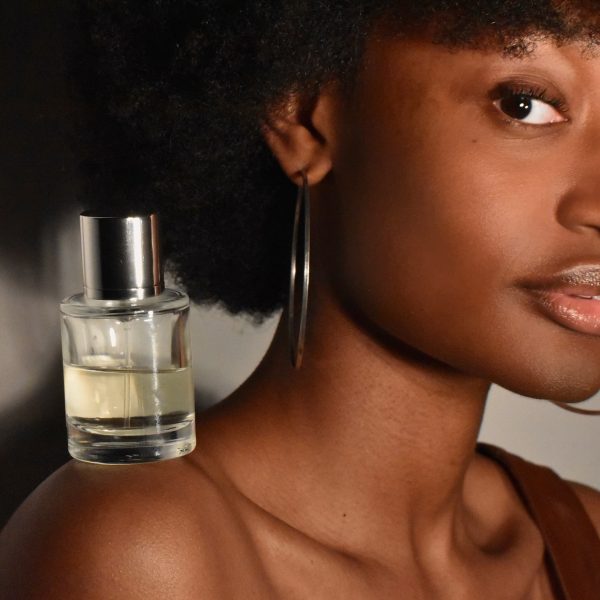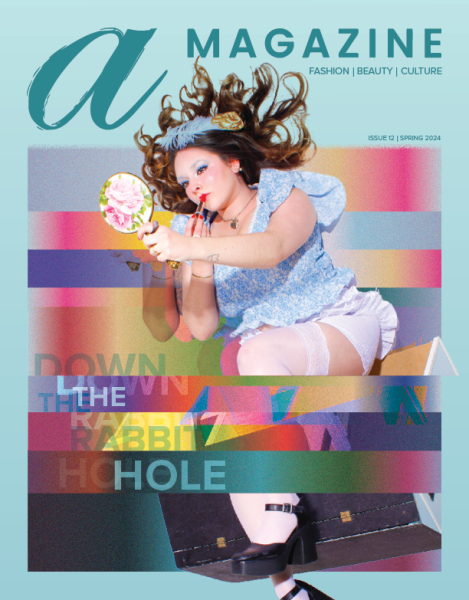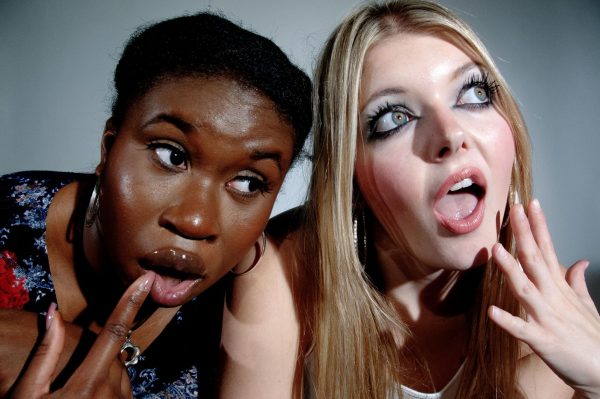a mag’s tips for finding a perfect foundation match
Wearing makeup enhances the beauty that one already has. Makeup can be fun, creative and even challenging. One major component of the makeup equation is foundation because it is the base of your entire look. Before we dive into how to find the shade that fits your skin, let’s break down the chemistry behind foundation.
Foundation comes in various forms: liquids, sticks, creams or powders. There are also different coverages and finishes you can choose from. Sheer coverage means the foundation has a light wash of color where you’ll still see most of your skin, and light coverage is a thin layer of foundation. Medium coverage gives you an even complexion but still gives you a natural looking appearance, while full coverage foundation is designed to cover your skin entirely.
As for finishes, a matte finish means you’re using a foundation that doesn’t contain any oils, giving a smooth look. Dewy finishes make the skin appear moisturized and glowy since these products contain natural oils and humectants. Satin finishes are the middle ground between matte and dewy finishes because they make the skin look like velvet. Lastly, natural finishes give just enough coverage for scars or acne but not enough as full coverage makeup so it’s lightweight and breathable.
Choosing the right foundation for you is often based on skin type and personal preference. The book “Milady Standard Cosmetology” delves into the differences between foundation types, and we’ve compiled some information to help you find the best foundation for your skin.
Liquid
Liquid foundations are often made up of oil and water often containing aluminum which acts as a drying agent to produce a matte finish. Liquid foundations labeled “oil-free” are targeted toward those with oilier skin types. For those with acne-prone skin, check the product’s label to determine if your foundation choice is deemed “non comedogenic,” which means the ingredients won’t clog up your pores.
Popular Recommendations:
NARS Light Reflecting Advanced Skincare
L’Oreal Infallible Fresh Wear 24HR Foundation
Cream
Cream-based foundations are also known as oil-based. They are generally thicker in consistency than your standard liquid foundation because it contains less water. Creams allow for heavier coverage and often work well for those with mature or dry skin types.
Popular Recommendations:
Neutrogena Healthy Skin Compact Makeup
Cover FX Total Cover Cream Foundation
Mineral
According to “Milady Standard Cosmetology,” mineral makeup is a form of makeup with high pigmentation. Pigmentation refers to the color that is deposited on the skin from the product. When the pigmentation is high, this means there will be a higher concentration of pigments added to its formula. Minced together are binders and flow agents providing natural looking coverage. It is meant to feel weightless on the skin once it is applied. This type of foundation normally works for those with acne, rosacea, allergies and sensitive skin.
Popular Recommendations:
BareMinerals Original Loose Powder Mineral Foundation SPF 15
PUR 4-in-1 Pressed Mineral Powder Foundation
Choosing the correct shade of foundation can definitely be daunting because you want to choose the perfect match. If you choose something too dark, it will create a muddy and uneven look. Foundation that is too light will make one appear dull and chalky.
However, you do not have to fear finding the correct shade, you just need to know how to go about the process. You need to know your skin and examine yourself to understand your complexion: fair, light, medium or deep. From that point, you need to think about undertones. An undertone is the color underneath the surface of your skin which affects your overall hue. Undertones can be warm, cool or neutral which are determined by the color of your veins. For example, those with warm undertones appear to have green veins, cool undertones appear to have blue veins while those with bluish-green veins have neutral undertones. Cool undertones are red, pink or blue. Warm undertones are yellow, peachy or golden while neutral undertones are a combination of olive and a mix of warm and cool.
After figuring out your undertone, you should then test the foundation on your bare skin along your jawline. A foundation that disappears right into your skin is the correct foundation to go with. It is extremely important to try foundation on skin with no makeup or self-tanner because you will match your foundation properly. When testing the foundation, also test the color on your neck to make sure it matches. If you don’t, your base will appear uneven.
Pick a few options and test them out on your skin. Once you have it on, view it in natural light. Matching foundations underneath fluorescent lighting will likely give you an inaccurate match. Different types of lights can give off different tones and will have an influence on how you view your undertone and shade. One final tip: to help avoid oxidation, or the process where makeup changes to a darker tone once it reacts to outside elements, set your look with a translucent powder. Setting powders help absorb any remaining oils which could trigger oxidation and result in a darker shade of foundation.
To help match your foundation, you can also take tests through Sephora that will give you an idea of what you can try. Finding the perfect foundation for your skin takes time, so be patient when strolling through the seemingly never ending makeup aisle. With some time, practice and these tips, you’ll be ready to find the perfect foundation match that melts into your skin.
Support Student Media
Hi, I’m Catie Pusateri, the Editor-in-Chief of A Magazine. My staff and I are committed to bringing you the most important and entertaining news from the realms of fashion, beauty and culture. We are full-time students and hard-working journalists. While we receive support from the student media fee and earned revenue such as advertising, both of those continue to decline. Your generous gift of any amount will help enhance our student experience as we grow into working professionals. Please go here to donate to A Magazine.
After figuring out your undertone, you should then test the foundation on your bare skin along your jawline. A foundation that disappears right into your skin is the correct foundation to go with. It is extremely important to try foundation on skin with no makeup or self-tanner because you will match your foundation properly. When testing the foundation, also test the color on your neck to make sure it matches. If you don’t, your base will appear uneven.
Pick a few options and test them out on your skin. Once you have it on, view it in natural light. Matching foundations underneath fluorescent lighting will likely give you an inaccurate match. Different types of lights can give off different tones and will have an influence on how you view your undertone and shade. One final tip: to help avoid oxidation, or the process where makeup changes to a darker tone once it reacts to outside elements, set your look with a translucent powder. Setting powders help absorb any remaining oils which could trigger oxidation and result in a darker shade of foundation.
To help match your foundation, you can also take tests through Sephora that will give you an idea of what you can try. Finding the perfect foundation for your skin takes time, so be patient when strolling through the seemingly never ending makeup aisle. With some time, practice and these tips, you’ll be ready to find the perfect foundation match that melts into your skin.
Support Student Media
Hi, I’m Catie Pusateri, the Editor-in-Chief of A Magazine. My staff and I are committed to bringing you the most important and entertaining news from the realms of fashion, beauty and culture. We are full-time students and hard-working journalists. While we receive support from the student media fee and earned revenue such as advertising, both of those continue to decline. Your generous gift of any amount will help enhance our student experience as we grow into working professionals. Please go here to donate to A Magazine.

